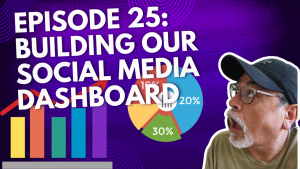Surveys across North America show that nearly six in ten employees have considered quitting their jobs over work-related stress, and the percentage climbs to 60 percent inside organizations with fewer than 250 staff (Fairplay Talks, 2025). That threat is not abstract; the Small Business Administration estimates replacement costs at one-third of annual salary, so even a single resignation drains profit from thin margins. An employee assistance program (EAP) should be the first safety net, yet many owners still treat it as a brochure rather than a strategic asset.
Management style amplifies, or dampens, risk. When supervisors ignore early signs of overload, presenteeism spikes and the stress spiral accelerates. A systematic review of 115 peer-reviewed studies concluded that well-integrated EAPs lower work stress and raise organizational commitment, especially in small and medium enterprises (Long & Cooke, 2022). Such results show that culture and clinical support work best in tandem; one without the other leaves gaps employees can fall through.

The Science Of Switching Off
Organizational-psychology research defines psychological detachment as mentally disengaging from work during non-work time. A longitudinal study of Chinese tech staff found that high detachment reduced depressive symptoms by curbing emotional exhaustion (Wu et al., 2023). The same experiment noted a moderating effect of self-compassion, suggesting that any tactic that boosts personal agency, meeting-free blocks, four-day pilots, even calendar audits, can strengthen detachment.
Meeting-free experiments validate the link. Laker and colleagues tracked companies that removed 40 percent of meetings, roughly two days per week, and recorded a 57 percent stress reduction and a 71 percent productivity gain (Laker et al., 2022). Translating that to a shop floor means cordoning off quiet production windows, labeling them “no-meeting blocks” on shared calendars, and training managers to respect them. An employee assistance program then augments recovery by providing counseling during those freed-up hours, letting staff solve personal issues without sacrificing billable time.
Servant Leadership As A Shield Against Compassion Fatigue
Burnout rarely stems from laziness; it emerges from resource mismatch. Servant leadership, which prioritizes follower growth over command-and-control, replenishes depleted resources by increasing autonomy and acknowledgment. A 2024 cross-industry study showed servant leaders raise work engagement through added personal resources and clearer role expectations (Cai, 2024). Engagement, in turn, buffers compassion fatigue, the emotional residue from caring interactions that leave employees drained.
Frontline research in long-term-care centers found that higher compassion satisfaction scores correlated with lower compassion fatigue, and servant-style supervisors predicted those positive scores (Vracevic et al., 2025). Managers therefore combat fatigue not only by offering an employee assistance program but also by modeling humility, active listening, and equitable workload distribution, classic servant-leadership traits. Embedding these values in daily stand-ups rewires team norms faster than any poster campaign.
Building An Open Door Policy That Actually Works
An open door policy sounds simple, yet execution matters. CultureMonkey’s 2024 engagement analysis emphasized that transparent escalation paths cut voluntary turnover when leaders respond within one business day (CultureMonkey, 2024). Open-door credibility rises further when leaders share capacity dashboards, live snapshots of individual task loads, so staff can see that speaking up leads to workload redistribution instead of retaliation.
Interactive workload dashboards are no longer enterprise-only toys; a 2025 police-unit case study demonstrated that a low-code dashboard balanced assignments, reduced task conflict, and lowered stress markers among officers (Karisa & Ahmad, 2025). Small firms can mirror the concept with Trello, Asana, or even Google Sheets. When team members witness real-time adjustments, the open door policy evolves from vague promise to concrete process, reinforcing trust that feed-back will translate into action.

From Benefit To Strategic Engine
Many founders regard an employee assistance program as insurance, good to have, seldom used. Data undermine that myth: usage across 2,679 U.S. employers now averages 12 percent annually, up from 10 percent before the pandemic, while every dollar invested returns roughly ten in absenteeism savings (University of Maryland, 2023). A recent peer-review comparing 85,000 EAP cases linked counseling plus coaching to a 46 percent drop in work-impairment scores within 60 days (CuraLinc, 2024).
To move beyond check-the-box compliance, leaders should weave EAP access into onboarding scripts, quarterly town-halls, and Slack reminders. For example, a bakery in Portland schedules “Mental-Health Monday” notices that pair upcoming meeting-free blocks with a QR code to the EAP portal. Repetition normalizes help-seeking and frames the program as performance hygiene rather than crisis triage.
Capacity Dashboards And Meeting-Free Blocks: Practical Employee Retention Strategies
Transparent workload data and protected focus time anchor evidence-based employee retention strategies. When teams see tasks distributed fairly, and have uninterrupted hours to finish them, turnover intent slides. A Walden-University dissertation on HR teams in the retail sector recorded a 22 percent retention uptick after leaders shared weekly capacity dashboards and cut meeting volume by one-third (Tucker, 2024).
Meeting-free blocks also guard individual circadian peaks. A scoping review on four-day weeks explained that performance benefits flow from dual mechanisms: recovery of energy and re-motivation through compressed deadlines (Rae et al., 2024). Firms that cannot move to shorter weeks can still emulate the recovery effect with rotating “deep-work” windows. Linking those windows to EAP mindfulness modules offers a one-two strike against stress: environmental change plus personal coping skill.
Retention And Well-Being Metrics
Effective employee retention strategies rely on leading indicators, not lagging exits. Combine monthly EAP utilization, dashboard-flagged overload incidents, and pulse-survey detachment scores to forecast risk. A systematic review of EAP outcomes confirms that presenteeism reductions often surface weeks before absenteeism drops, making them a valuable early signal (Long & Cooke, 2022).
Compassion-fatigue studies add another lens; frontline workers with high fatigue scores report 30 percent higher turnover intention (Deriglazov et al., 2025). Embedding the Professional Quality of Life scale into quarterly surveys lets managers intervene early, coaching through servant leadership and EAP referrals.
A Management Style That Keeps People And Profits Alive
Preventing burnout is not a single fix; it is an ecosystem where an employee assistance program delivers clinical aid, servant leadership supplies emotional support, an open door policy offers voice, and data-driven dashboards enforce fairness. Each element tackles a different burnout vector, yet all converge on one outcome, people stay. When leaders adopt these integrated employee retention strategies, they cut the cost of churn, lift productivity, and foster loyalty strong enough to weather economic shocks. The science is clear; the tactics are proven; the next move belongs to every manager who refuses to lose another teammate to avoidable stress.




































